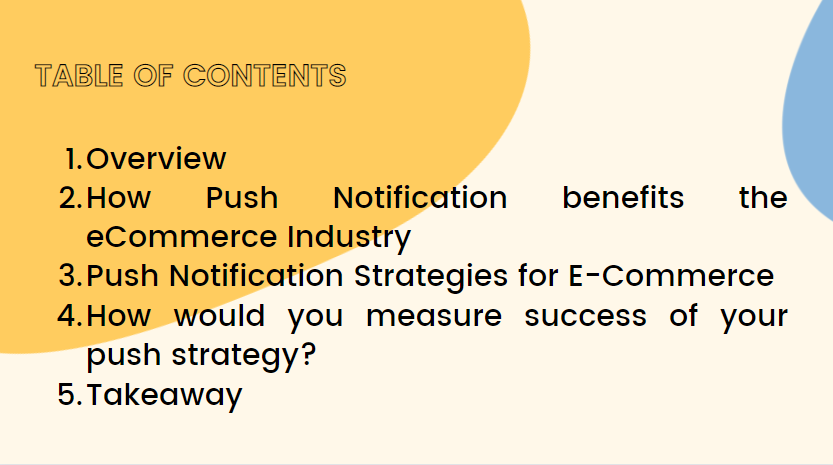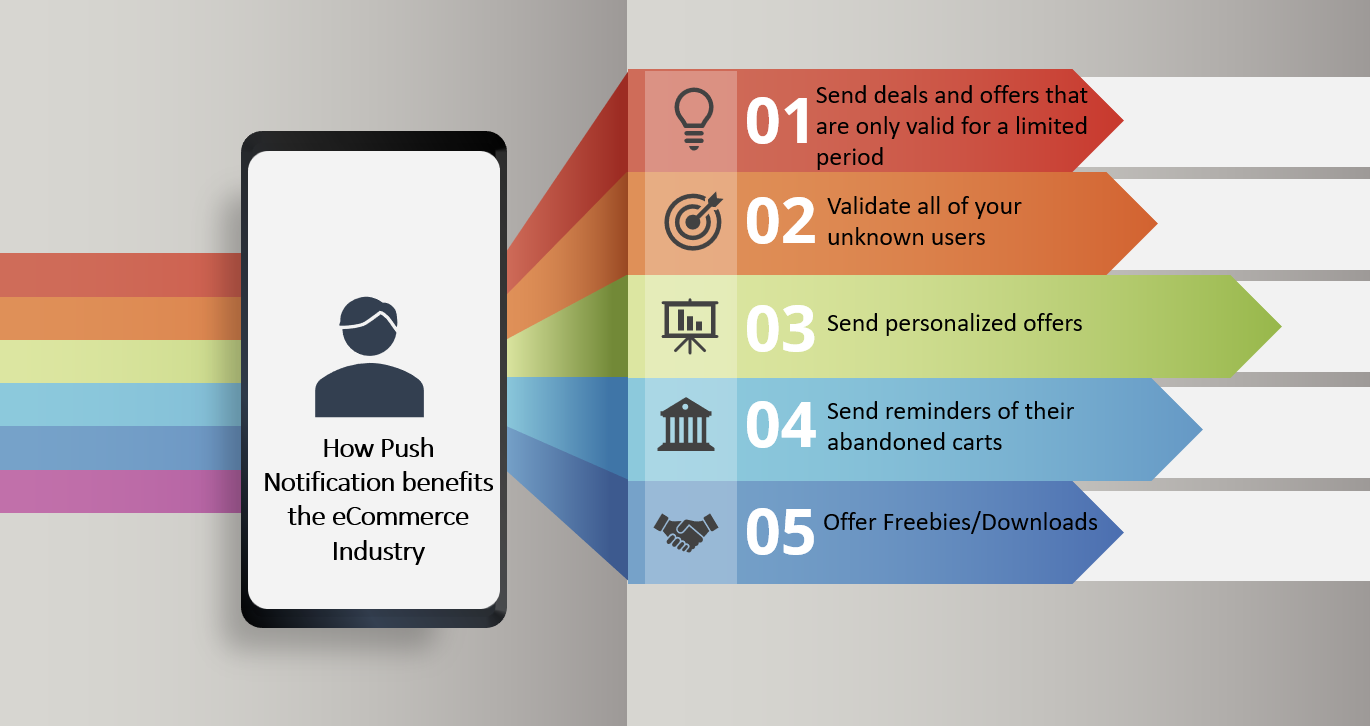
Any organization must maintain a steady traffic flow and connect with existing and new customers. Marketers can accomplish this using a variety of communication channels such as email, text messages, social media, push alerts, and so on. It is also important to implement effective ecommerce push notification strategies

Push notifications are one of the most successful marketing tools, particularly for eCommerce companies. Additionally, push notifications have 4X the clickthrough rate of emails, with an 8-10% average. You can personalize the push messages, and they pop up at the most inopportune times on the web browser, like when a user opens it. Indeed, they let e-commerce businesses reach out to their customers wherever they are and entice them back to their apps or website with special offers and discounts. To boost user engagement and retention, the messages are concise and to-the-point, and they are sent in real time.
This post will provide in-depth insights into push notifications, strategies, and some of the best approaches to get your eCommerce store started with this channel.
How eCommerce Push Notification benefits the eCommerce Industry
We all know that one of the most important parts of eCommerce is user engagement. It is necessary to increase site visitors and establish partnerships that will increase your bank account in the long run.
Push notifications can engage consumers and encourage them to take action. In addition to that, they are hard to overlook, arrive at the appropriate moment, and can be segmented for personalization.
The below scenario highlights the uses of push notification:

- Send deals and offers that are only valid for a limited period: Push messages generate a sense of urgency as soon as you announce the sale, encouraging users to act quickly. Do you know over 83.3% of push notifications are related to offers or discounts?
- Validate all of your unknown users: You can convince all of your anonymous users to subscribe to you by incentivizing the signup process. The login information will subsequently be used to track user behaviour throughout all devices.
- Send personalized offers: Using audience segmentation based on a user’s online activity and previous purchase history, you may send personalized notifications to increase conversion rates.
- Send reminders of their abandoned carts: You can also encourage them to complete the sale if they add things to their cart but leave without checking out (for whatever reason).
- Offer Freebies/Downloads: Get creative with your messaging to entice consumers to take advantage of your free trials or downloads.
eCommerce Push Notification Strategies
1. Decide on a campaign goal
Your ecommerce push notification strategies should be able to capture the attention of your customers and prompt them to take action on your website. For instance, if you want the user to make a purchase, don’t modify the focus to promoting an ongoing deal. Set a goal for yourself and stick to it.
2. Make a campaign plan
Stop, consider, and contemplate if you’re thinking of sending a generalized text to an untargeted set of people. As a result, to deliver a tailored message:
- The very first step is to categorize your subscribers. Customer segmentation is essential for crafting distinct messages based on the context of the users.
- Choose the appropriate frequency. Sending numerous messages in a short period, such as five messages in five hours, will upset your users.
- Make it easy for them by communicating clearly and contextually.
3. Use simple and easily understandable communications
The message tone and language you use will have a big influence on the effectiveness of your push campaign. It’s critical to understand your target audience, their profile, and the level of formality with which you communicate. All of your push notifications should, in theory, include a short message. Instead of saying, “Subscribe to our site notifications for daily offers and updates,” say, “Subscribe now to enjoy the best deals.”
4. Make the campaign more automated
Before initiating a push campaign, you can’t manually organize your data. If you misinterpret user data, you risk losing the opportunity to convert that customer. You can feed your push notifications with marketing automation by putting up user parameters and dynamically segmenting them depending on their website habits.
5. Run a split test on the campaign
Please A/B test and optimize your campaigns for better results.
A/B testing can help you figure out which words, phrases, lengths, and timings work best for your push alerts. Before you send out your message, be sure it’s perfect. It’s critical to consider your push notification message approach.
6. Examine the campaign’s results
Before starting any campaign, make a list of the metrics you will track:
Some them include:
- Click-through rate
- Website traffic
- Unsubscriptions
- Sales made
Also Read – eCommerce Personalization – Top 5 ways to increase customer retention
How would you measure success of your ecommerce push notification strategy?
Create push notifications that entice users to click and provide value. Furthermore, you can consider These Points When Writing A Push Notification
- Give more focused content: On the other hand, copywriting can be challenging, especially when you have to compress your message into a limited number of characters while keeping context and relevancy.
- Be Specific: Most individuals are impatient and don’t have time to read cryptic communications.
- If you want to get more clicks, make sure your message is simple and to-the-point, highlighting your most significant value proposition.
- Be Concise: Across all platforms, the character limit for push notifications is typically 40-120 characters. This means that you must write in a very concise manner. Also, your communications will be shortened when read across different devices if you surpass a specific character restriction, and consumers are unable to understand or act on them.
- Focus on Frequency: Push notifications are supposed to engage your users, not overwhelm them. As a result, sending messages too regularly may irritate your subscribers, causing them to unsubscribe or remove your app, whilst sending messages seldom may not be enough for them to remember you. You can always keep track of your push notification statistics, such as bounce rates, click rates, and opt-outs, and then choose the most appropriate frequency to maintain.
- Time To Send: Don’t expect a customer to respond to your enticing offer in the wee hours of the morning! Understanding your worldwide subscribers’ time zones and locations can assist you manage your message to be sent at the most appropriate times – for the best reaction.
Here are some ideas for persuading your people to sign up:
- Allow the user who have finished the registration process to receive free shipping.
- If a user creates an account, allow them to save their delivery information and preferred payment method for faster checkout.
- Inform your users that they will receive discounts and special offers for upcoming deals and notifications when a new product is added to your mobile e-commerce app.
- Use relevant tools to make relevant product recommendations.
If you’re an ROI-focused digital retail firm looking to grow its subscriber base and increase audience engagement, push notifications are the way to go. At appICE, we can give an end-to-end automation solution to help you improve your marketing and increase your sales in the most efficient way possible.
No Comments